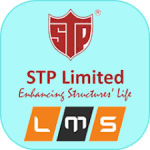Introduction
In the realm of anatomy, the evolution of technology has revolutionized our understanding of the human body. One such breakthrough is the advent of 3D Bones and Organs (Anatomy) offering unprecedented insights into the complexities of bones and organs. In this article, we embark on a journey to unravel the marvels of 3D bones and organs, exploring their intricacies and significance in the realm of medicine and beyond.
Exploring 3D Visualization Techniques
Embarking on our exploration, it’s essential to comprehend the various techniques employed in 3D visualization. From computed tomography (CT) scans to magnetic resonance imaging (MRI), each method offers a unique perspective, allowing for detailed examinations of bones and organs in three dimensions.
The Intricacies of Skeletal Structure
Unveiling the Skeletal Framework
At the core of the human body lies the skeletal system, serving as the structural foundation. Through 3D visualization, we gain a profound understanding of the skeletal framework, comprising bones intricately interconnected to support and protect vital organs.
Examining Bone Density and Composition
Diving deeper, 3D visualization enables the assessment of bone density and composition, crucial for diagnosing conditions like osteoporosis. By analyzing the density distribution within bones, healthcare professionals can devise personalized treatment plans to mitigate risks and enhance bone health.
Navigating the Organ Systems
Deciphering Vital Organs in 3D
Beyond the skeletal structure, 3D visualization allows for a comprehensive exploration of vital organs, including the heart, lungs, liver, and kidneys. Through detailed renderings, we gain insights into their spatial relationships and intricate functionalities, fostering a deeper appreciation for the complexity of the human body.
Understanding Organ Functionality
Delving into organ functionality, 3D visualization facilitates the study of physiological processes, elucidating how organs interact and contribute to overall health. From cardiac dynamics to pulmonary circulation, these insights pave the way for innovative medical interventions and enhanced patient care.
Applications in Medical Education and Practice
Transforming Medical Education
In the realm of medical education, 3D visualization serves as a powerful tool, offering students immersive learning experiences. By simulating anatomical structures in detail, aspiring healthcare professionals can enhance their understanding and proficiency, fostering competence and confidence in clinical practice.
Advancing Surgical Planning and Intervention
In surgical practice, 3D visualization revolutionizes preoperative planning, enabling surgeons to meticulously strategize procedures with unparalleled precision. From complex orthopedic surgeries to intricate neurosurgical interventions, these advancements optimize outcomes and minimize risks, benefiting patients worldwide.
FAQs
Q: How does 3D visualization enhance medical diagnosis?
A: 3D visualization provides clinicians with detailed insights into anatomical structures, facilitating accurate diagnosis of conditions and abnormalities.
Q: Is 3D visualization widely accessible in healthcare settings?
A: Yes, advancements in technology have made 3D visualization increasingly accessible, empowering healthcare professionals with valuable tools for patient care.
Q: Can 3D visualization aid in patient education?
A: Absolutely, 3D visualization enables healthcare providers to engage patients in their care by visually explaining complex anatomical concepts and treatment plans.
Q: Are there limitations to 3D visualization techniques?
A: While incredibly beneficial, 3D visualization techniques may have limitations in certain scenarios, such as imaging artifacts or compatibility issues with specific patient conditions.
Q: How does 3D visualization contribute to surgical precision?
A: By providing detailed anatomical reconstructions, 3D visualization assists surgeons in planning procedures with utmost precision, resulting in improved surgical outcomes.
Q: What are the future prospects of 3D visualization in healthcare?
A: The future of 3D visualization holds immense potential, with ongoing advancements poised to further revolutionize medical diagnosis, treatment, and patient care.
Conclusion
In conclusion, the advent of 3D visualization has ushered in a new era of understanding in the field of anatomy. From unraveling the complexities of skeletal structures to elucidating the functionalities of vital organs, 3D visualization transcends traditional boundaries, shaping the future of healthcare and medical education.





